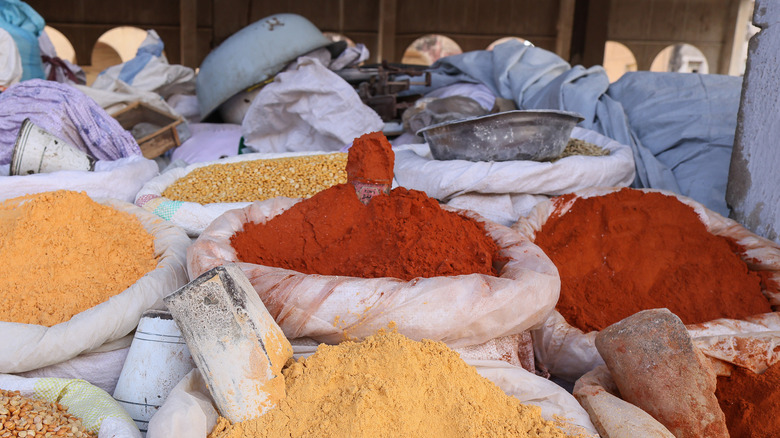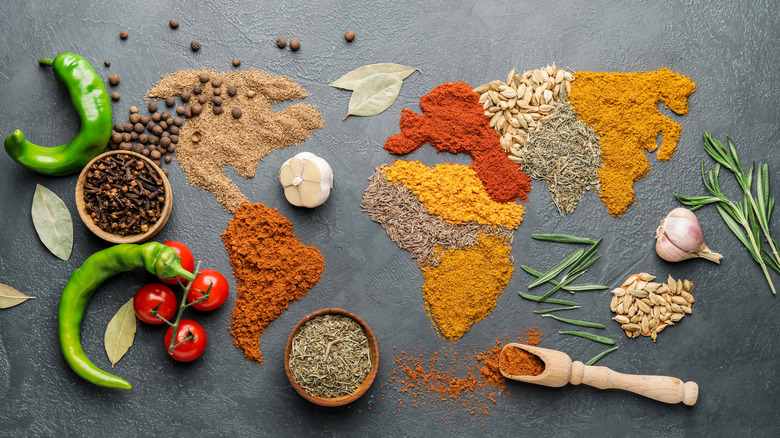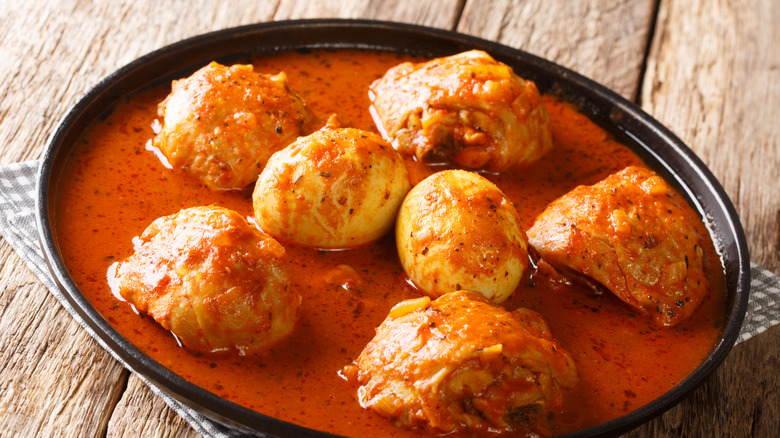Berbere: The Legendary Ethiopian Spice Everyone Should Experiment With
The world might be a prominent place, but in the era of globalization, foreign countries, cultures, and cuisines are now more accessible than ever. Even if you're not the most adventurous diner, you'll miss out if you don't try Ethiopian food.
Ethiopia is a West African country that is proudly the oldest independent country on the continent. This long history has helped to refine a unique cuisine that stands out against its regional neighbors. Many Ethiopian meals are a combination of earthy, spicy, and sour flavors that are blended together in every bite.
Most meals are enjoyed with a type of soft, thin, sourdough bread called injera. It is made with a grain called teff, and its subtle sour flavors serve as the constant companion to Ethiopian staple dishes like Messer Wot (red lentil stew).
The other backbone of Ethiopian cuisine is a potent spice mix that is used to flavor Messer Wot among countless other dishes. This spice mix, known as Berbere, might just become your new favorite spice blend.
Berbere's global origins
The name berbere likely originated in the ancient Ethiopian word for pepper. However, the spice itself originated on the other side of the Red Sea. While modern Ethiopia is a landlocked country, during the reign of the ancient Aksum kingdom, it shared its Eastern borders with the Red Sea. This created a naval trade route with the Silk Road spice trade.
Aksumite traders would use the seasonal monsoon winds to trade with the far East. On their return voyages, they would sample all of the many spices and aromatics that they had purchased, and the story goes that they would create different blends of these spices as well. The story goes that these blends would then be shared with the trader's families, and became common household spice mixes.
Today, different styles of complex berbere spices exist in every region, and even between each household. Luckily, there are plenty of commercially available blends sold by spice vendors online for you to sample and see which suits your palette best.
How to cook with berbere
Berbere is often made with up to 20 spices, but is defined by a typical palette. Common ingredients like fenugreek seeds, african basil, ginger, garlic, chili peppers, coriander, cinnamon, nutmeg, cardamom, and thyme are all used to give berbere an earthy, spicy, savory flavor that makes it ideal to pair with roast vegetables, meats, beans, and of course sour injera.
Chef Marcus Samuelsson claims that a jar of berbere spice mix is one of his go-to gifts and one of his favorite pantry staples as well. While berbere is great for seasoning heavy stews like doro wat and savory breakfast fare like chechebsa, it can also be used in countless other dishes as well.
As Samuelsson points out, berbere is good with just about everything. While it does have a heat to it, it isn't overwhelmingly spicy and has a nice rounded flavor to balance other elements. It can be used to spice up cold salads, and grain bowls, or just go on eggs and rice. Anything that would do with a kick of heat and spice will be better off with just a dash of this powerful blend.


